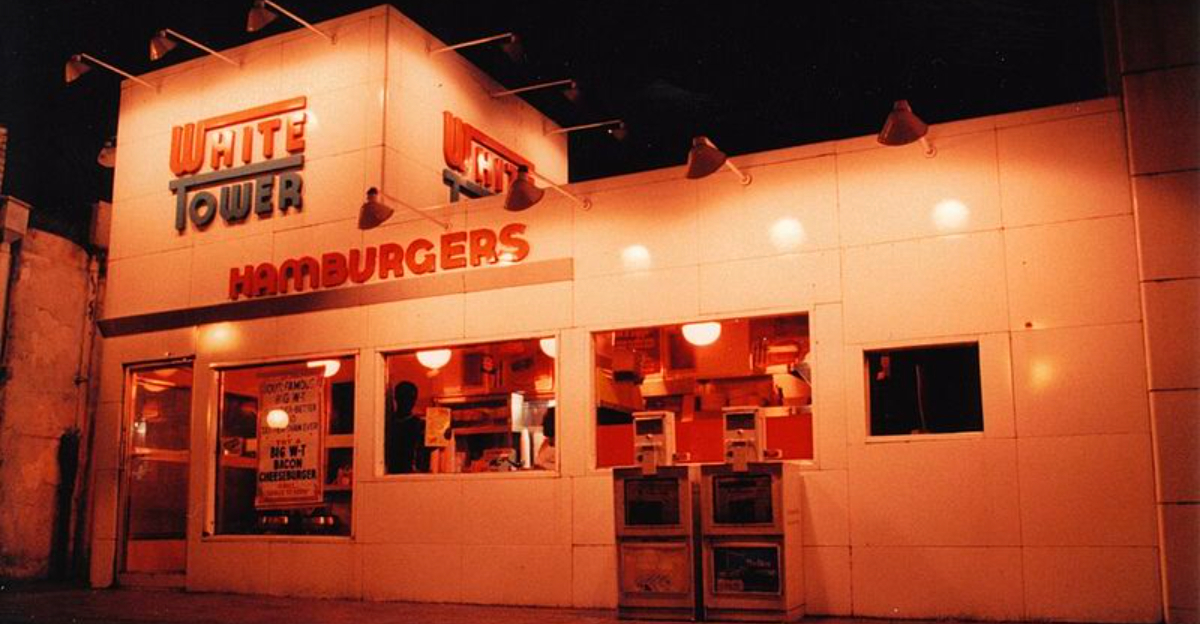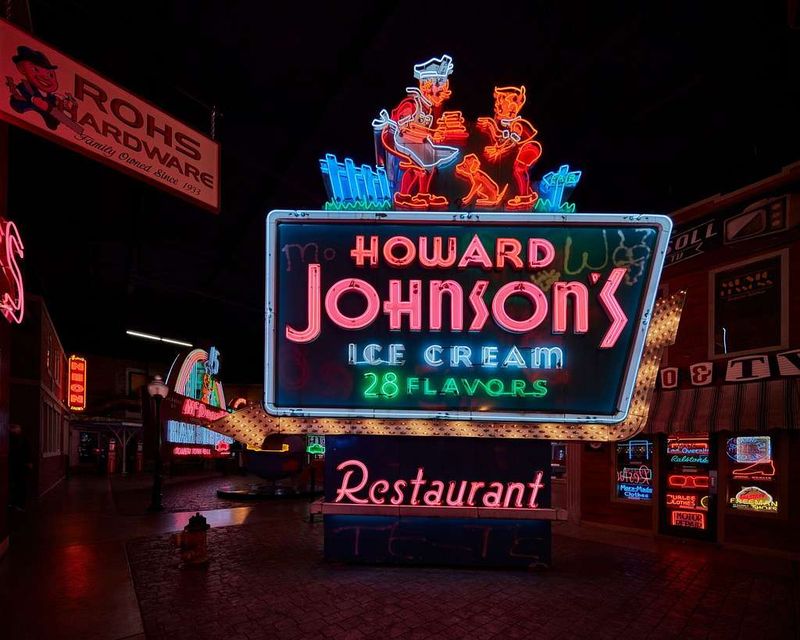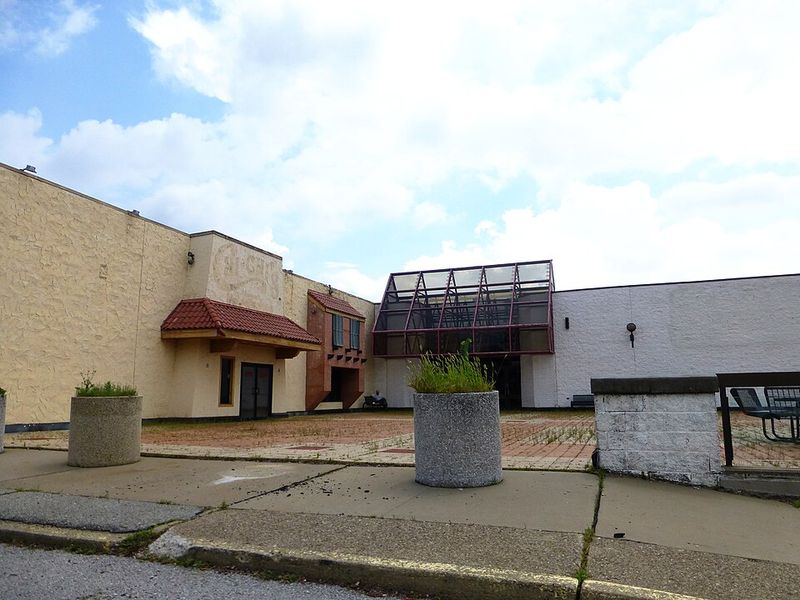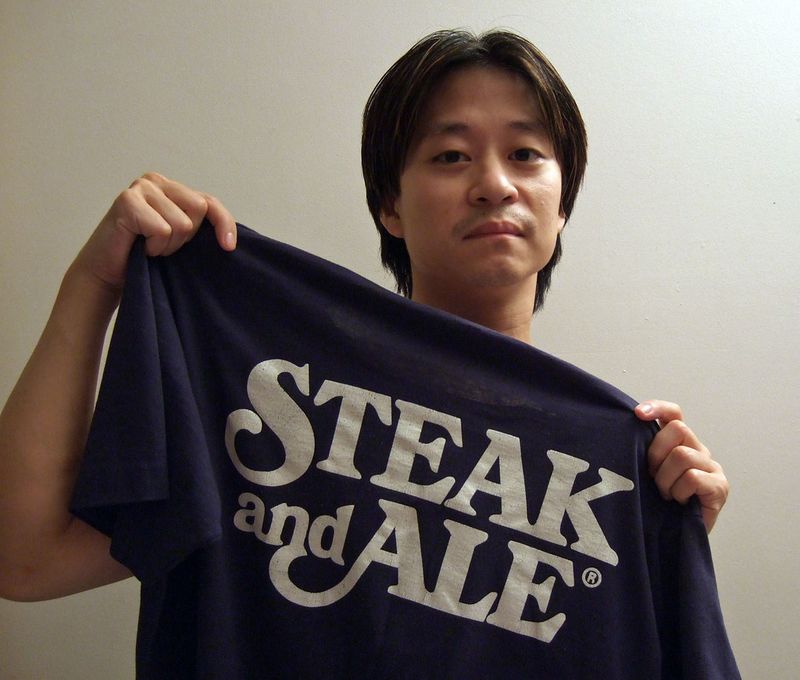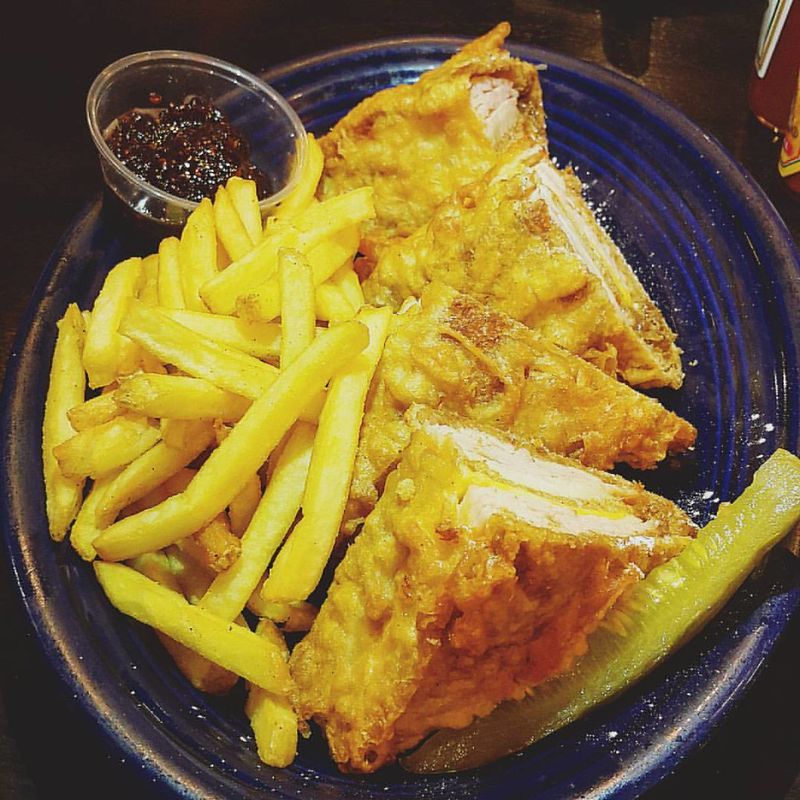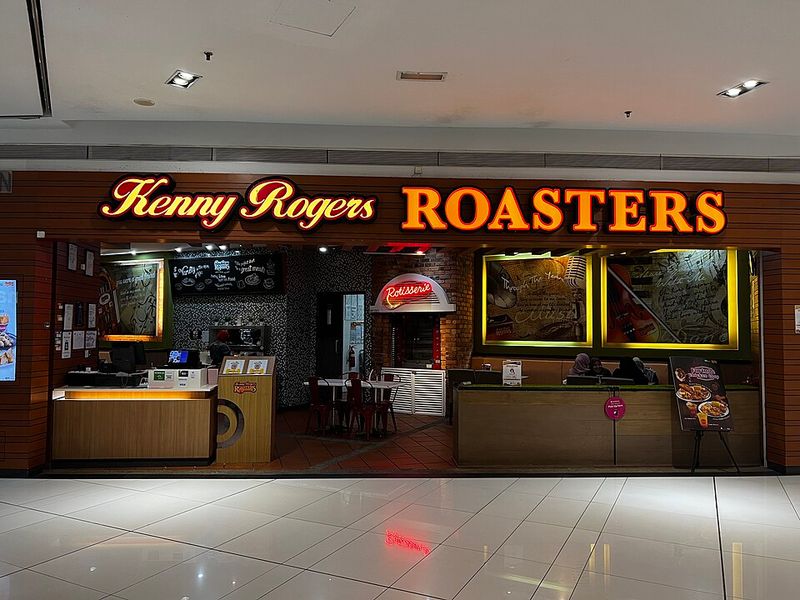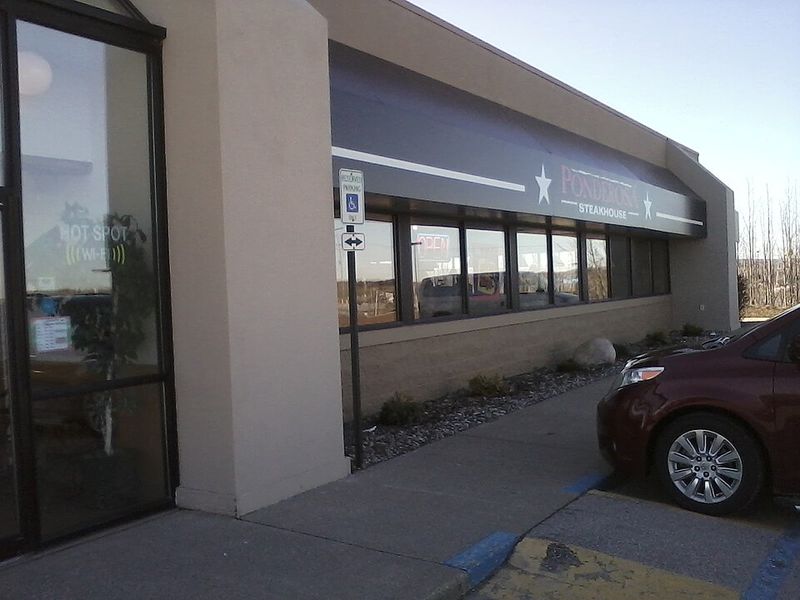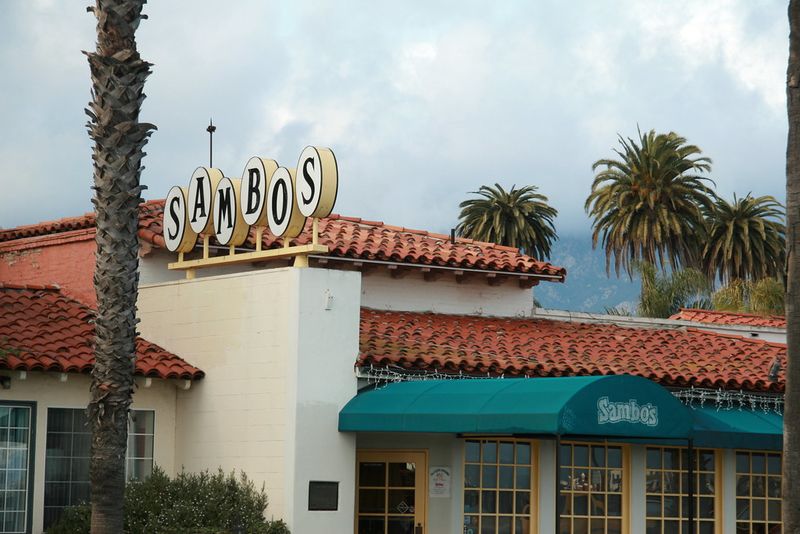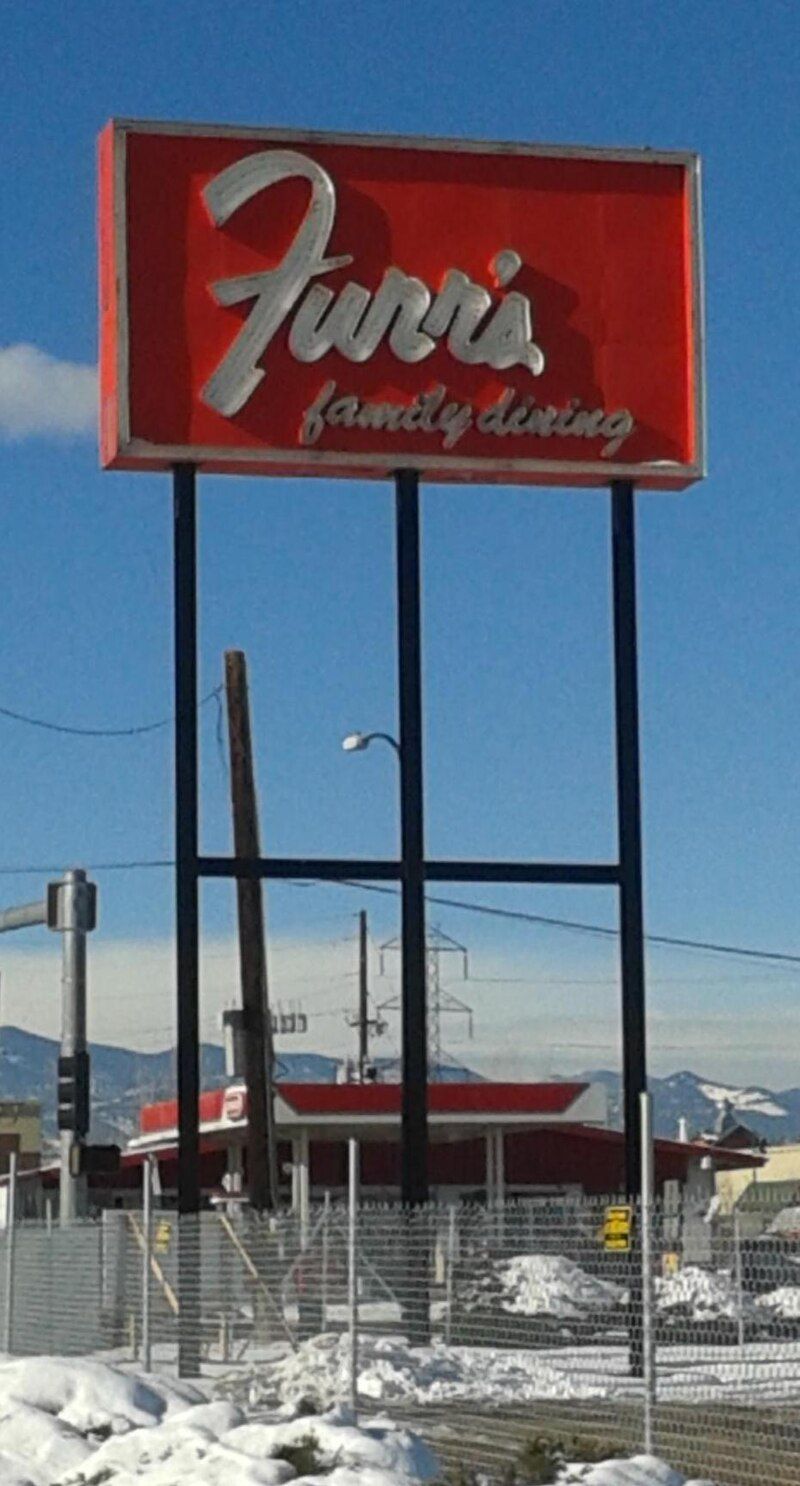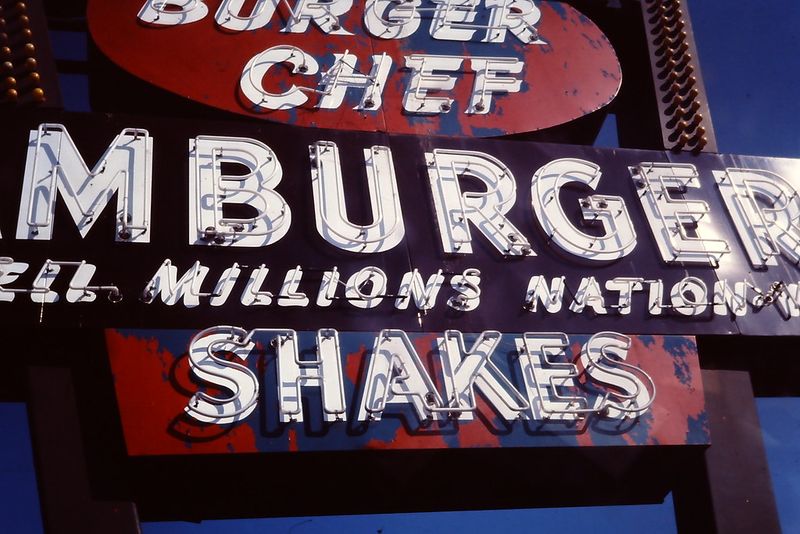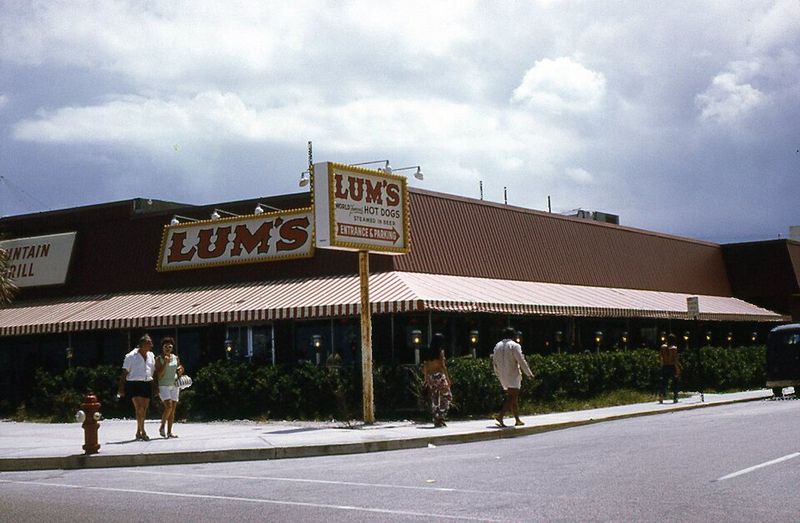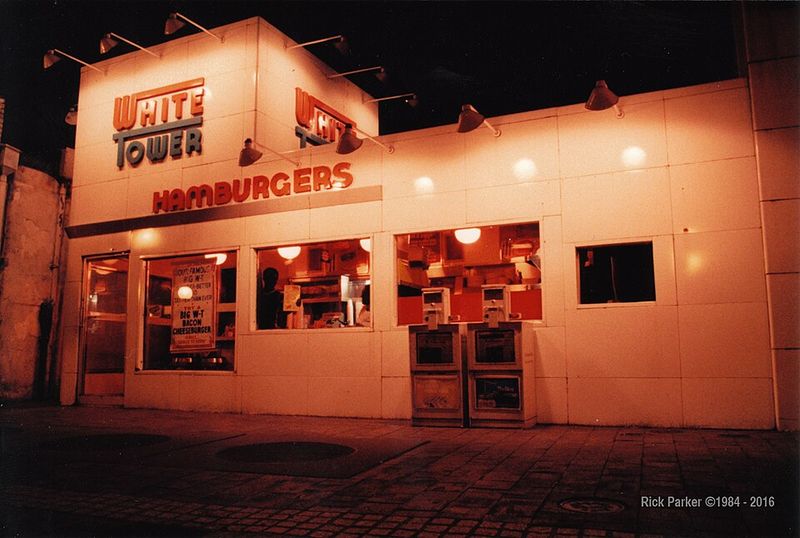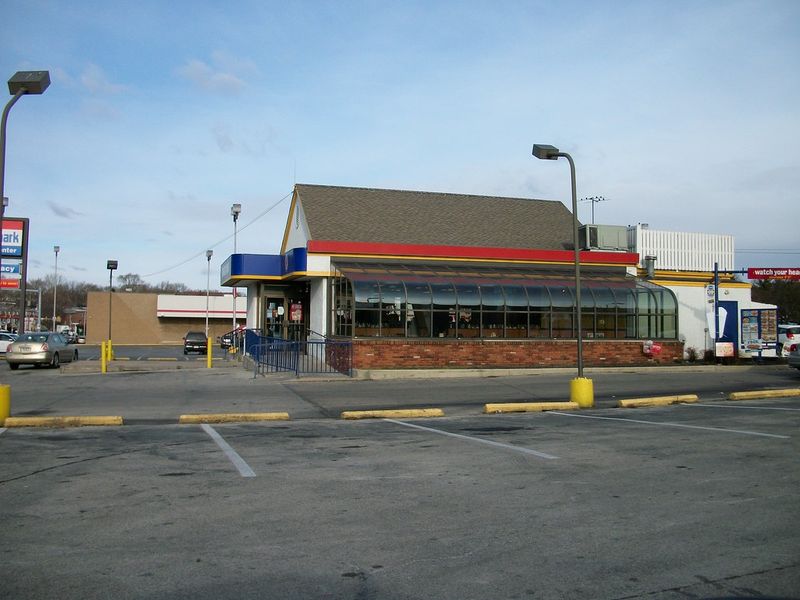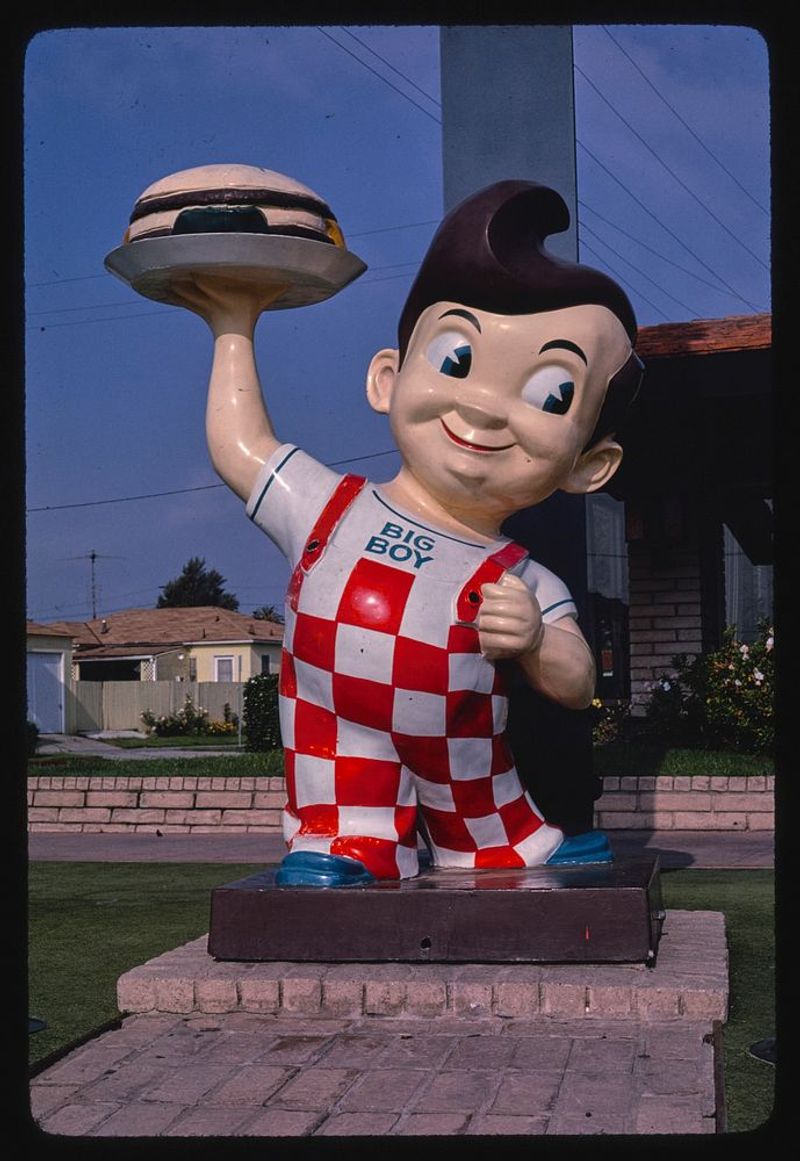Remember when eating out meant more than just burgers and pizza? America once had a colorful landscape of restaurant chains that served up everything from rotisserie chicken to beer-steamed hot dogs. Many of these beloved spots have vanished, leaving behind only memories and a few nostalgic photos. But fans haven’t forgotten – they’re still talking about these lost treasures online, sharing stories and wishing for their return.
1. Howard Johnson’s
At its peak, Howard Johnson’s was America’s largest restaurant chain, famous for its orange roofs and 28 flavors of ice cream. It was a highway staple in the 1950s and ’60s, offering comfort food to families on road trips.
Sadly, changing travel habits and fast-food competition led to its decline, with the last restaurant closing in 2017. Travelers once relied on HoJo’s for predictable quality and affordable meals during long journeys.
Today, fans reminisce about fried clams, hot dogs, and those iconic ice cream flavors that made every stop feel special.
2. Chi-Chi’s
Known for its festive atmosphere and sizzling fajitas, Chi-Chi’s brought Mexican cuisine to mainstream America. Unfortunately, a 2003 hepatitis outbreak linked to contaminated green onions dealt a fatal blow to the chain.
Fans still miss its famous salsa and fried ice cream. The restaurant had a lively vibe with colorful décor and friendly service that made every visit feel like a celebration.
Many people grew up celebrating birthdays there, making the loss even more personal. Chi-Chi’s introduced a generation to Mexican flavors they’d never experienced before.
3. Steak and Ale
Founded in 1966, Steak and Ale offered affordable steak dinners in a cozy, medieval-themed setting. It was a pioneer in casual dining and inspired countless imitators.
Despite shutting down in 2008, fans continue to reminisce about its salad bar and signature honey butter bread. The restaurant made steak dinners accessible to everyday families, not just special occasions.
Its dimly lit interiors and comfortable booths created an intimate atmosphere perfect for date nights. People still talk about that honey butter bread—some even share copycat recipes online today.
4. Bennigan’s
This Irish-themed chain once thrived with its upbeat bar atmosphere and hearty pub fare. A combination of overexpansion and recession woes pushed Bennigan’s into bankruptcy in 2008.
A few franchise locations have reopened, but most fans still dream of its Monte Cristo sandwich comeback. The restaurant was known for its generous portions and fun, energetic vibe that attracted groups of friends.
Their Death by Chocolate dessert was legendary, often shared among tables. Bennigan’s represented the casual dining boom of the ’80s and ’90s at its finest.
5. Kenny Rogers Roasters
Co-founded by the country music legend himself, Kenny Rogers Roasters was famous for its rotisserie chicken and Southern sides. Though it disappeared from the U.S., it still operates in parts of Asia—proof of its enduring appeal.
The restaurant emphasized healthy cooking with wood-fired rotisserie ovens that gave chicken a unique flavor. Cornbread muffins and creamy mashed potatoes were customer favorites that kept people coming back.
Even Seinfeld fans remember the episode where Kramer became obsessed with the neon sign. The brand’s international success shows it had real staying power overseas.
6. Ponderosa and Bonanza Steakhouses
These sibling chains offered affordable steak dinners and all-you-can-eat buffets. They were a hit in small towns and family communities through the 1980s and ’90s.
While a few locations survive, they’re a shadow of their former glory. Families loved the value—kids could pile plates high with chicken wings, mac and cheese, and soft-serve ice cream.
Sunday dinners after church became a tradition at Ponderosa for many American families. The Western-themed décor added a fun, rustic touch that made dining feel like an adventure for children.
7. Sambo’s
Once boasting over 1,000 locations, Sambo’s was known for its pancakes and coffee shop charm. However, controversy over its racially insensitive name led to its downfall in the 1980s.
Fans still miss its affordable breakfast classics. The chain served fluffy pancakes, crispy bacon, and bottomless coffee that fueled morning commutes across America.
Many locations operated 24/7, making them popular late-night stops for truckers and night-shift workers. Despite the name controversy, people remember the food quality and friendly service fondly.
8. Furr’s Cafeteria
A Southern favorite, Furr’s dished up comfort food like fried chicken, mac and cheese, and pie. The cafeteria-style dining made it a nostalgic family staple for decades.
Sadly, bankruptcy and changing tastes led to its closure in 2021. Seniors especially loved Furr’s because they could see all the food before choosing, and portions were always generous.
The dessert selection was incredible—rows of pies, cakes, and cobblers tempted diners at every visit. Furr’s felt like eating at grandma’s house, with home-cooked meals that warmed the soul.
9. Burger Chef
Before McDonald’s dominated the scene, Burger Chef was a fast-food pioneer—introducing the first kids’ meal long before the Happy Meal existed. Bought out by Hardee’s in the early ’80s, it faded away, but fans still pine for its Big Shef burger.
The chain actually invented the concept of bundling a toy with a child’s meal, revolutionizing fast food marketing. Their Funmeal came in a colorful box and made dining out exciting for kids.
Many Baby Boomers remember Burger Chef as their first fast-food experience, creating lasting childhood memories.
10. Lum’s
Hot dogs steamed in beer and a quirky tiki vibe made Lum’s stand out in the 1960s. Despite its unique concept and loyal following, the chain couldn’t survive after ownership changes and bankruptcy.
Still, its beer-steamed franks live on in nostalgia. The restaurant also served Ollieburgers, a signature sandwich that fans remember fondly decades later.
Lum’s tropical-themed interiors felt exotic and fun during an era when tiki culture was booming. The combination of German beer techniques and American hot dogs created something truly original and memorable.
11. White Tower
A direct competitor to White Castle, White Tower served up tiny square burgers in art deco buildings across the country. Legal battles and shifting trends brought it down, but vintage photos still evoke memories of simpler times.
The restaurants featured gleaming white porcelain exteriors and stainless steel interiors that looked futuristic for their era. White Tower burgers cost just a nickel during the Depression, making them affordable treats for struggling families.
Their buildings were architectural gems, and some still stand today, repurposed but recognizable to history buffs.
12. Gino’s Hamburgers
Started by NFL star Gino Marchetti, Gino’s Hamburgers was a mid-Atlantic favorite serving burgers and fried chicken. After merging with Roy Rogers, the brand vanished—but its legacy continues with a few revived locations in Maryland.
The Gino Giant burger competed head-to-head with the Big Mac, and many locals thought it tasted better. Marchetti’s football fame helped promote the chain, making it a regional powerhouse throughout the ’60s and ’70s.
Recent revival efforts prove that Baltimore-area nostalgia for Gino’s remains strong even today.
13. Bob’s Big Boy
While a handful of Big Boy restaurants still exist, many regions lost their local versions. The smiling mascot and classic diner atmosphere once defined Americana dining, and fans still yearn for its double-deck cheeseburger and milkshakes.
Bob’s pioneered the double-decker burger concept that countless chains would later copy. The restaurants featured carhop service and jukeboxes, embodying the golden age of American diners.
Collectors now pay hundreds for vintage Big Boy statues and memorabilia, showing how deeply the brand touched American culture.
